Do you have a Whirlpool dishwasher that doesn’t seem to be drying your dishes properly? If so, you may be wondering what the problem is and how to fix it. Fortunately, there are some simple steps that can help get your dishwasher back into top condition. In this article, we will discuss the common causes of Whirlpool dishwashers not drying dishes properly and provide instructions for how to diagnose and fix these issues. We hope this information helps you get your appliance back up and running in no time!
Improper Loading
One of the most common causes of dishwashers not drying correctly is improper loading.
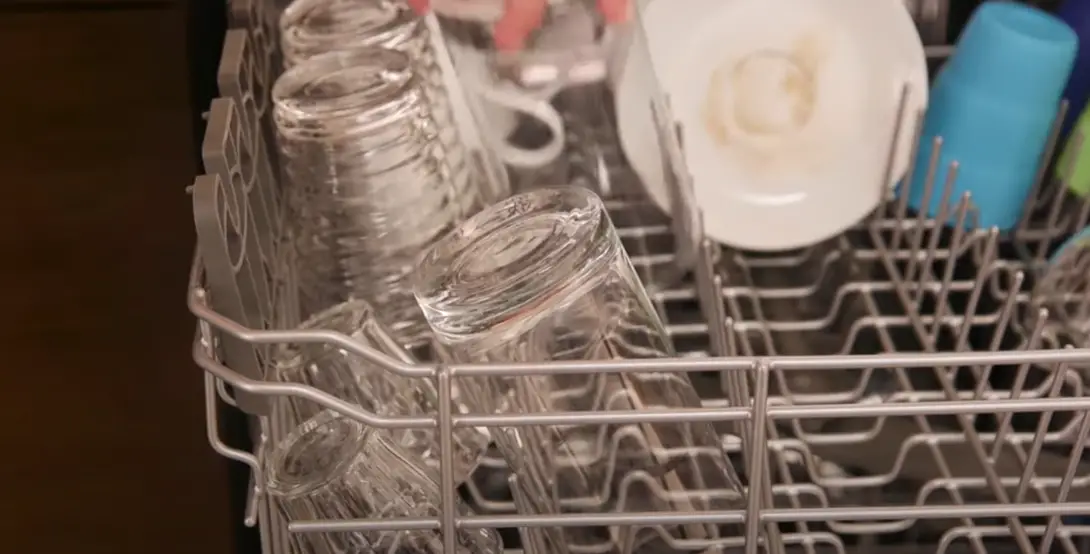
Overloading
Overloading or incorrectly loading your dishwasher can cause it to not dry dishes properly. To ensure that all the dishes are getting enough air circulation for proper drying, it’s important to follow the manufacturer’s instructions for loading the dishwasher. Make sure not to overload it and leave enough space between dishes for air circulation. Additionally, you should avoid blocking the dishwasher’s vent with large items.
Nesting
If the dishwasher is not drying properly, it may be because it has not been properly installed. If you have recently moved the dishwasher or changed the location of it, make sure that you have followed all manufacturer instructions for proper installation. This includes making sure that the water line is connected properly, that the dishwasher is level and all door seals are in place. If none of these steps have been taken, there could be a problem with the dishwasher not drying properly.
Washing Plastic Items
If you are washing plastic items in your dishwasher, they may be the culprit of your Whirlpool Dishwasher not drying properly. Certain plastics are not suitable for the hot water and detergents used in a dishwasher, so check that your plastics are marked as “dishwasher-safe”. If not, hand wash them instead. You should also try to avoid putting large amounts of plastic items in the same load, as this can cause them to stick together and create a clog that impedes the water flow. Finally, ensure any plastic items that you do put in are properly nested in the rack to promote proper air circulation. [1]
Use A Rinse Aid
Using a rinse aid can help get your dishes dry. This is an additional step to the main dishwashing cycle where liquid or gel is added to the rinse cycle which helps reduce surface tension and ensures that water is able to readily bead off your dishware. The rinse agent also works in tandem with the heated drying cycle to ensure dishes are thoroughly dry when the cycle is complete. To use an rinse agent, simply fill your dishwasher’s rinse agent dispenser before running a cycle and you should see better drying results.
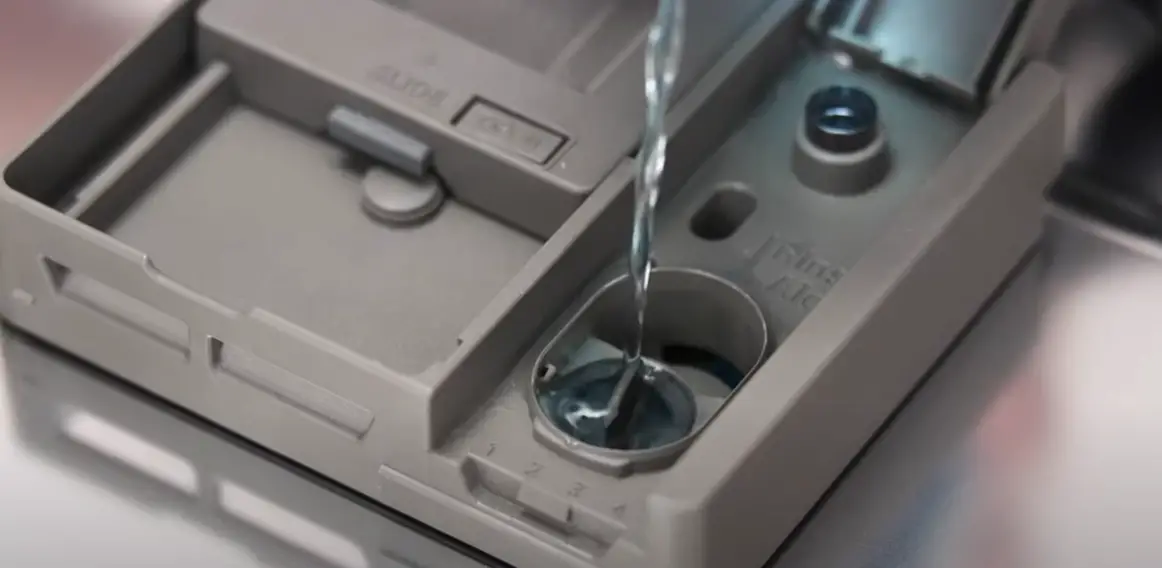
Inadequate Drying Features
When a dishwasher is not drying dishes completely, it could be due to inadequate drying features. To fix this issue, you should check the following:
- Make sure the Automatic Dry setting is enabled. This will help ensure that dishes are heated to a higher temperature which improves the dry time.
- Check the rinse aid dispenser and make sure it is filled with rinse aid. The rinse aid helps reduce the surface tension of water, which allows it to sheet off the dishes.
- Check the air gap and make sure it is clean and unobstructed. This will allow for better ventilation and faster drying.
- Ensure that the end of cycle signal is enabled so you know when the dishwasher cycle is complete.
- Clean the filter regularly as it helps remove food particles from the dishwasher which can slow down drying time.
- Make sure the drain line is not clogged and ensure that dishes are loaded properly so water can flow freely during the cycle. [2]
Water Temperature is Too Cold
One of the most common causes of dishwasher not drying is water temperature being too low. If your dishes are still wet after the cycle has finished, then the water temperature could be to blame. To fix this issue:
- Check your home’s hot water heater and make sure it is set at the correct temperature. The ideal range is between 120-140°F (49-60°C).
- Make sure the water pressure is adequate. If the water pressure in your home is too low, it could be causing the dishes to not dry properly.
- Check the dishwasher’s inlet valve to make sure it is working properly. If you suspect that there may be an issue with the inlet valve, contact an appliance technician for further assistance.
- Clean the filters in your dishwasher to remove any debris that could be blocking water from entering the dishwasher. [3]
Part Malfunctions
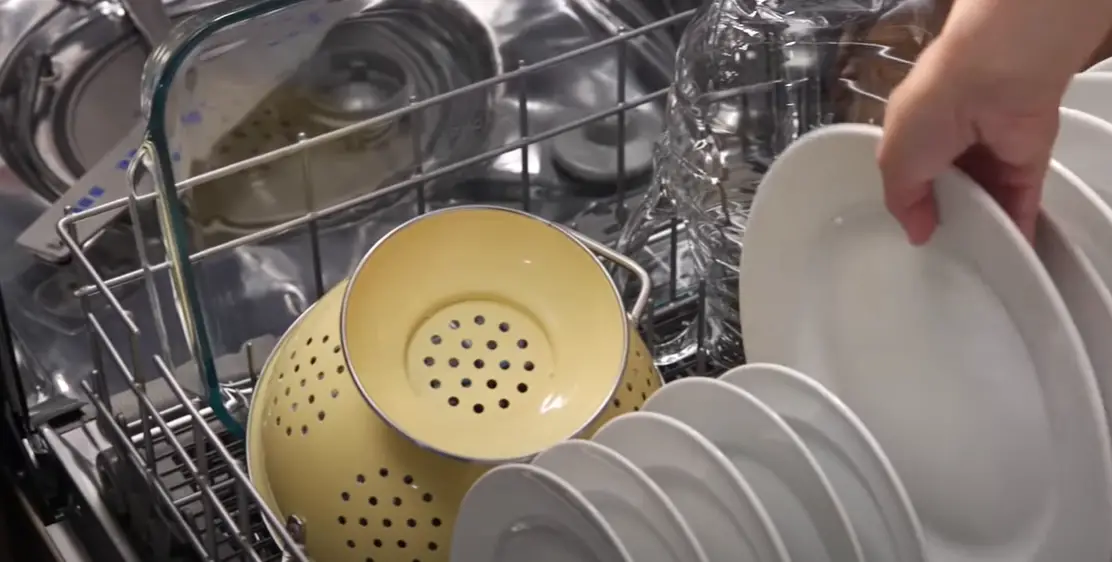
When your dishwasher isn’t drying properly, it’s important to first identify which part is malfunctioning. In most cases, the culprit is either the heating element or the timer.
Heating Element Burnt Out
The heating element on a dishwasher is responsible for generating the hot air needed to dry dishes. If your dishes are not drying, then it could be due to the heating element being burnt out. To diagnose this issue, take a look at the heating element itself. The element should be visibly glowing red when in operation. If the element is not glowing, it may have burnt out and needs to be replaced.
Damaged Vent Assembly
If your freshly-washed dishes are still wet, it might be the result of a broken vent assembly in your Whirlpool dishwasher. The vent assembly is part of the dishwasher’s heating element and is responsible for releasing steam and hot air during the drying cycles. A damaged vent assembly can cause poor drying performance because the steam and hot air are not released properly. To check if the vent assembly is damaged, you can open up the dishwasher and inspect the vent assembly for signs of damage such as cracks or breaks in the plastic. If any damage is evident in the vent assembly, it must be replaced with a new one for optimal performance.
Defective Vent Fan Motor
In some cases, a defective vent fan motor may be the cause of your dishwasher not drying properly. The fan helps to blow warm air over the dishes to help them dry faster. Without proper functioning of the fan, your dishes will stay moist and may even begin to emit an unpleasant odor. To fix this issue, you’ll need to locate the vent fan motor and replace it with a new one.
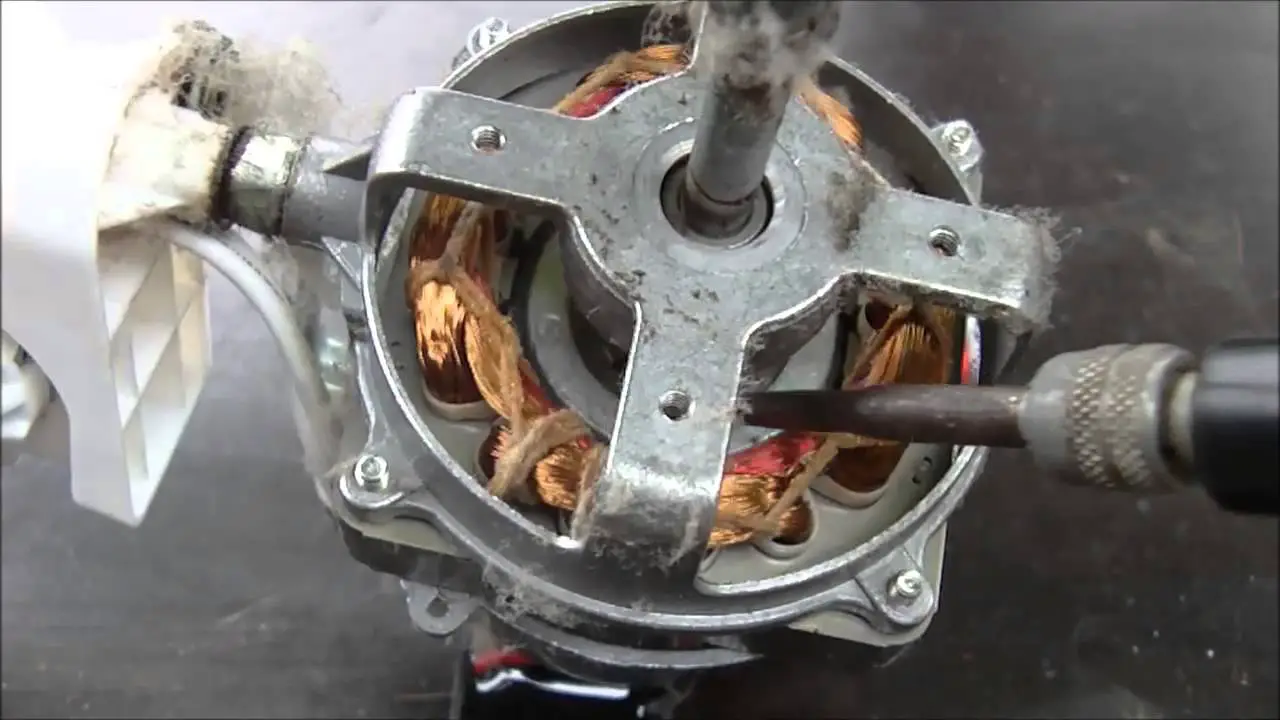
Defective Hi-Limit Thermostat Or Thermal Fuse
The Hi-Limit Thermostat is a device which helps to keep the water in your dishwasher at a safe temperature. If this thermostat malfunctions, your dishes may remain wet because the dishwasher will not reach a high enough temperature to dry them. If you notice that your dishes are not getting dry, you may have a defective Hi-Limit Thermostat or Thermal Fuse. To check for this, unplug your dishwasher and locate the Thermostat or Thermal Fuse. If either of these components are faulty, you will need to replace them to get your dishwasher to work properly again. Once replaced, your dishes should start drying as they should. [4]
FAQ
Why is my Whirlpool dishwasher not heat drying?
There could be several reasons why your Whirlpool dishwasher is not heat drying. First, check if the heating element has gone bad or if it’s just a blown fuse. If the heating element is no longer functioning, you’ll need to replace it in order to keep your system running smoothly. Secondly, make sure the thermostat and timer are working properly. If the thermostat or timer is not functioning, you will need to replace it. Finally, check if there is adequate water pressure coming out of the faucet and into the dishwasher. If there is not enough water pressure, try replacing the hose or installing a new faucet. If the problem persists, you may need to contact a qualified repair technician.
How do I get my Whirlpool dishwasher to dry dishes?
If your Whirlpool dishwasher is not drying dishes properly, it may be due to a few possible factors. To get your Whirlpool dishwasher to dry dishes properly, try the following steps:
- Check the installation of your dishwasher .Make sure that it is level and that all the hoses are properly connected.
- Clean the filter. Over time, food particles and other debris can accumulate in the filter, preventing water from flowing properly. Check and clean the filter periodically.
- Regularly check the spray arms for any blockages or damage. Clear any blockages and/or replace damaged spray arms as needed.
- Make sure that the rinse aid dispenser is filled. Rinse aids help the dishwasher to dry dishes properly by reducing surface tension.
- Other possible causes of poor drying include not enough detergent, too much detergent, hard water, or a clogged drain. When the above methods do not resolve your problem, it’s best to seek out an experienced appliance repair specialist for a diagnosis and eventual solution.
What causes a dishwasher not to dry dishes?
If your dishwasher is not drying dishes efficiently, there are several possible explanations for why that might be the case. These include:
- Not enough heat during the drying cycle
- Inadequate detergent or rinse aid – Incorrect water temperature
- Blocked filters and jets
- Deteriorated seals and gaskets
- Clogged drainage or vent hose
- Malfunctioning heating element.
In order to properly diagnose why your dishwasher isn’t drying dishes, you’ll need to go through each of these possible causes one by one.
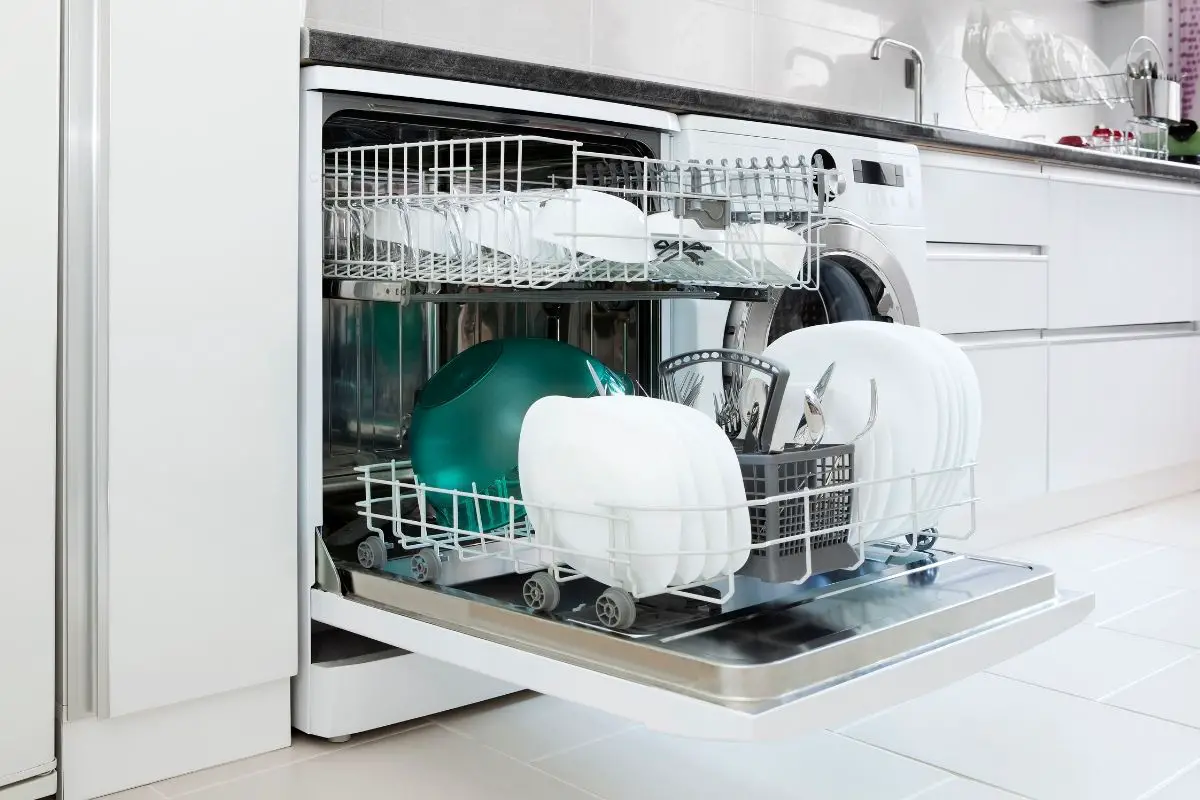
How do you reset the heating element on a Whirlpool dishwasher?
If your Whirlpool dishwasher is not drying dishes, it may be necessary to reset the heating element. Resetting the heating element may help to solve the problem and restore the dishwasher’s drying capabilities. Here’s how to reset it:
- Unplug the dishwasher from power.
- Find the heating element access panel, which is typically located on the bottom of your dishwasher.
- Remove the panel and locate the heating element and its wiring harness.
- Disconnect the wiring harness from the heating element.
- Reconnect the wiring harness to the heating element.
- Replace the access panel and plug the dishwasher back into power.
- Run a cycle to see if the dishwasher is now drying dishes.
- If resetting the heating element does not fix your Whirlpool dishwasher’s drying issue, it may be time to call in a professional appliance technician for further diagnosis and repair.
- In conclusion, resetting the heating element on a Whirlpool dishwasher is simple and can be done in just a few steps.
Why is everything still wet in my dishwasher?
Your dishwasher may not be drying your dishes properly because there are a few possible causes. The most common cause is a lack of heat or inadequate airflow. The dishwasher may be too full, blocking the air vents and preventing proper air circulation. Also, the heater element may be malfunctioning, or the thermostat or timer may need to be adjusted. In addition, the dishwasher’s heating element and/or filter may be clogged. In some cases, the door seal may have worn out and needs to be replaced.
Why is the Whirlpool dryer not drying?
There are many possible reasons why a Whirlpool dishwasher may not be drying dishes adequately. Pause or standby error codes, poor water temperature or water pressure, or even clogged filters and hoses can all contribute to inadequate drying. In addition, certain parts may need to be replaced over time due to wear and tear. A few common causes of poor dish drying are outlined below.
How can I make my dishwasher dry better?
There are a few things you can do to help improve the drying performance of your dishwasher.
- Increase the water temperature – The hotter the water, the better it is at helping clean and dry dishes in the machine. To increase the temperature of your water, adjust your hot water heater so that it’s set to a higher temperature.
- Use a rinse aid – A rinse aid helps prevent water from sticking to dishes after the wash cycle and will help to reduce drying time. You can buy rinse aids at most grocery stores or home improvement stores.
- Increase the temperature of your dishwasher’s drying cycle – Most dishwashers have an adjustable setting for drying. Increasing the temperature will help speed up the drying process and make sure dishes come out completely dry.
- Check for blockages – If your dishwasher is not draining properly, it could be due to a clog in the drain hose or filter. Inspect these areas and clean them if necessary to ensure that water can flow freely throughout the machine.
How do you fix the dryer if it’s not drying completely?
If your Whirlpool dishwasher is not drying completely, there are several possible causes and fixes you can try.
Make sure the door is completely closed and latched.
- Check to make sure the dishwasher is not overloaded.
- Make sure the condensation collector is not clogged or blocked.
- Check to make sure the rinse agent dispenser is full and working correctly.
- Make sure the heating element is working properly.
- Check the water intake filter for blockages or clogs.
Useful Video: How to Troubleshoot Dishwasher Not Drying – Whirlpool® Dishwasher
Conclusion
In this article, we discussed the potential causes of why your Whirlpool dishwasher is not drying dishes properly. We learned that there could potentially be an issue with the dishwasher’s heating element, door gasket, or spray arms. In order to fix this problem, you will need to inspect each of these parts and make sure they are in working order. If any part is found to be faulty, you can replace it yourself or seek professional help. Also, make sure to check if the dishwasher is properly connected to your home’s water supply and that all settings are correctly configured.
References
- https://atechappliance.com/blog/whirlpool-dishwasher-not-drying-dishes/
- https://www.ifixit.com/Wiki/Whirlpool_Dishwasher_Not_Drying
- https://midamericaappliancerepair.com/blog/whirlpool-dishwasher-not-drying-dishes/
- https://www.funktionalhome.com/whirlpool-dishwasher-not-drying-dishes/





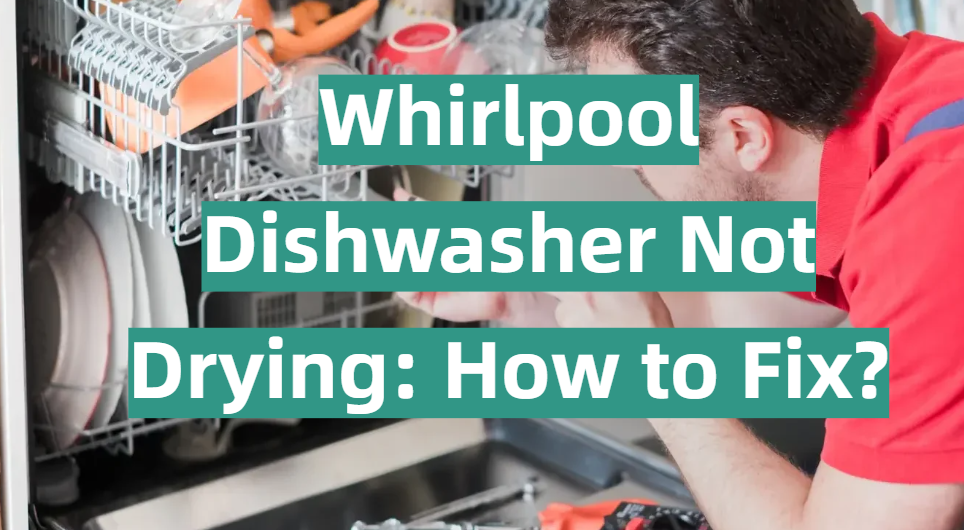





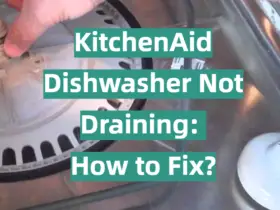
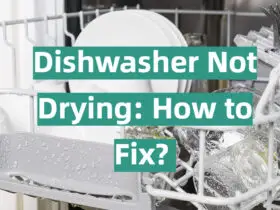
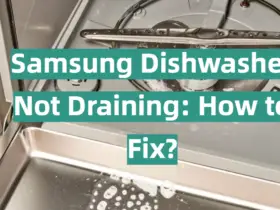
Leave a Reply